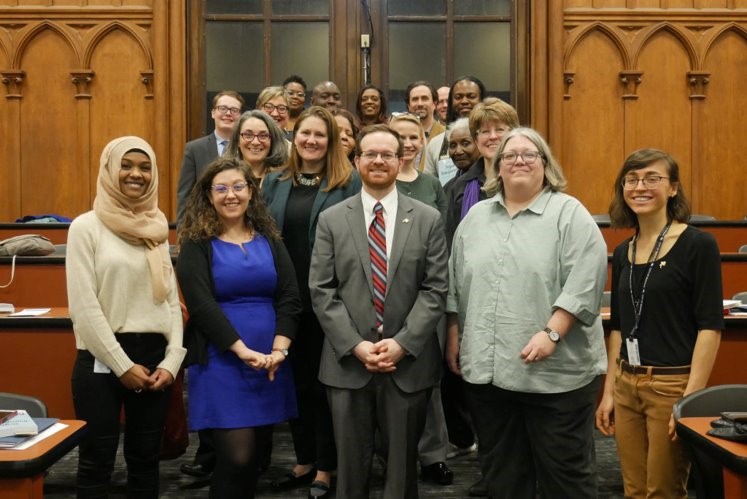What's Your Story?
September 16, 2019 by Meredith Trimble
Buffalo's Open Data Director Talks Data Storytelling

Particularly in an era of pervasive social media, when one upset constituent can spread inaccuracies instantaneously, firmly establishing truth through an easy-to-understand narrative has never been more important. In addition, transparency, mandated or not, is critical in a well-functioning democracy.
But data without context can be a project or budget killer. How do government innovators drive executive, legislative, and public buy-in for their plans?
Pairing modern technology with the timeless art of storytelling is key.
Kirk McLean, director of open data and chief of staff to the CIO, City of Buffalo, New York, joined Tyler’s Justin Bruce at GMIS Meets in August to take a deep dive into the evolution of government storytelling, which now includes data as a central component.
| |
 |
|
 |
| |
Kirk McLean
Director of Open Data and
Chief of Staff to the CIO
City of Buffalo, NY |
|
Justin Bruce
Performance Management
Practice Leader
Tyler Technologies |
Their session, How to Become a Data Storyteller, walked public sector IT leaders through creating narratives. These narratives not only engage and resonate with stakeholders, they provide the all-important context around an agency’s stats to ensure that everyone – internally and externally – is on the same page. A highlight was McLean’s demonstration of Buffalo’s open data portal and the city’s pioneering efforts to engage the public and transform data from mere information into compelling story.
A Story’s Value
Data storytelling improves communication, fights misinformation, and builds trust. This is important as there remains skepticism around government and the decisions public leaders make. Putting information out through open data is great, but data without context can lead to confusion, misinterpretation, and misinformation.
Fortunately, modern technology can enable effective, data-driven storytelling. Begin with user-friendly webpages that make understanding complex information easier. The story can help internal and external users understand what specific data means, where it came from, and how it connects to other related resources. This results in better communication, decision-making, and support inside agencies and across communities. Stories that provide context around datasets can increase the data’s usage beyond the reasons it was initially captured and spur private innovation and new partnerships.
The Buffalo Bureau of Forestry, for example, not only shows the most common trees in the jurisdiction, but it also offers maps of planting-appropriate vacant spaces, areas with the best shade, and tree distribution by street. The chart below illustrates the calculated benefit of a tree by district.

Buffalo Bureau of Forestry (last updated Aug. 8)
Key Storytelling Elements
Effective data storytelling is achievable for any size government agency. Bruce noted that successful efforts include “the four big to do’s: defining your purpose, identifying your audience, choosing your approach, and communicating openly and frequently.”
What’s more, successful data storytelling does the following:
- Humanizes a story
- Provides perspective
- Includes compelling visuals
- Drives specific action
Cities across the U.S. effectively tell their stories using these tactics. Some use data stories to facilitate innovation. For example, by giving residents access to business license data in a data-story format, they can easily find gaps in the market and use those insights to create new lines of business, applications, and services that propel economic growth. CitiStat Buffalo shows active business licenses by location, description, issuance date, and zoning type.

Buffalo Department of Business Licensing (last updated May 1)
Data 101 in Buffalo
Buffalo is a proven innovator not only in opening the city’s data and providing context, but also in actively engaging residents to effectively use content. The city’s open data portal offers, among other items, 30 datasets and 32 geospatial assets. McLean, however, poses an important question: “How open is open data if the people we’re opening it up to don’t have the knowledge or skills to effectively leverage it?”
Because not everyone is a data scientist (yet) McLean’s team enacted a bold vision, Data 101. “Data 101 cultivates and supports a data-savvy public,” McLean explained. The free, four-week public training sessions teach residents how to use the city’s data to improve communities, for example, by better understanding their neighborhoods or helping strengthen local grant applications. The sessions allow Buffalo’s employees to share their information in a way that makes sense to a broad range of people.

Kirk McLean, center, with Data 101 training participants
Residents learn how to navigate the open data portal, investigate research questions, and incorporate the city’s data with their own stories. “Your community can tell endless stories once your city opens its data and once they’re equipped with the knowledge and skills to make sense of it,” McLean said.
What’s Your Story?
Your message is more than just the number of potholes filled or dollars invested. Wrapping your data in story provides your diverse stakeholders with critical context. This helps you improve communications with the public, fight misinformation and rumors, and build trust.
At a higher level, the continued evolution of data transparency requires that governments move toward an approach of using data to inform, persuade, and engage stakeholders. To learn more, read our Guide to Data Storytelling.